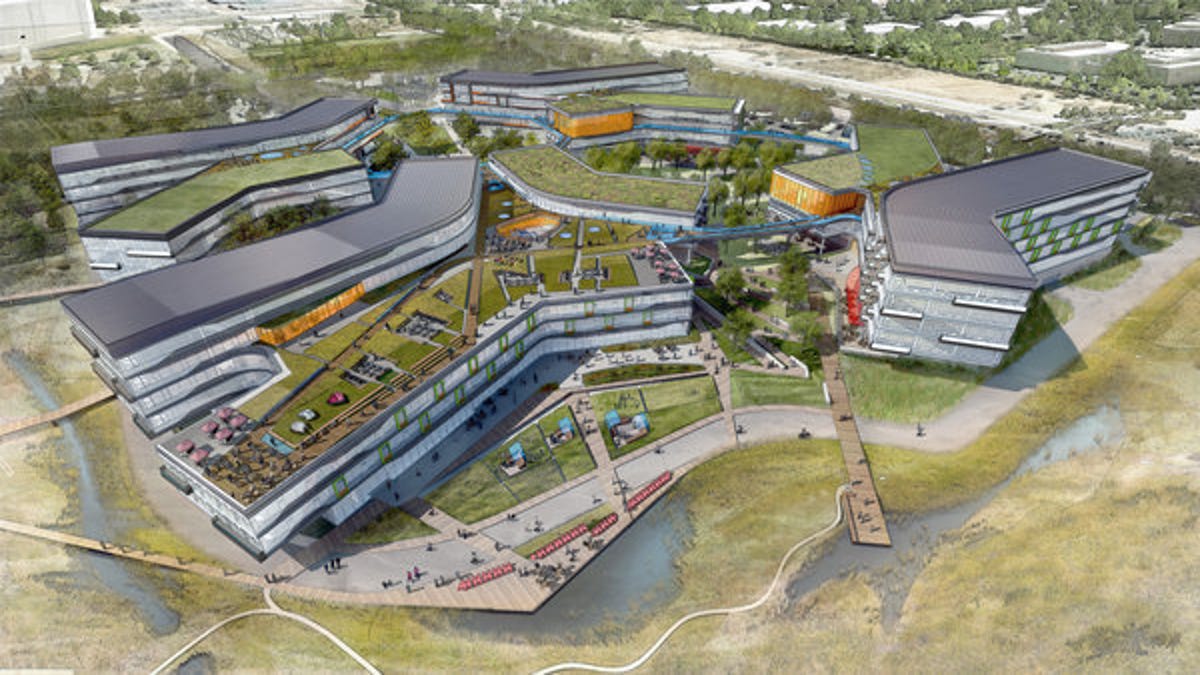Google flexes its Googleplex with planned expansion
The design of the 42-acre "Bayview" expansion, which is set for completion in 2015, reportedly grew out of a mountain of Google data.

Not to be outdone by Apple and its upcoming spaceship HQ, or Facebook and its future complex designed by starchitect Frank Gehry, Google is planning a massive expansion to the Googleplex. And in the company's algorithmic world, form follows data.
The 42-acre expansion was reportedly designed by architecture firm NBBJ using mountains of info gathered and quantified by Google's real estate team and involving everything from where the sun is at different times of day to which way the wind blows to the importance of placing one work group near another to, quite simply, what sort of workspace employees prefer.
"Bayview," as the expansion will be called, is a collection of vaguely boomerang-shaped buildings that are connected by bridges. Vanity Fair quotes David Radcliffe, a civil engineer who oversees Google's real estate, as saying that the design is meant to maximize "casual collisions of the work force."
"You can't schedule innovation," Radcliffe told the magazine. "We want to create opportunities for people to have ideas and be able to turn to others right there and say, 'What do you think of this?'" Radcliffe says no worker in all of Bayview will be more than a two-and-a-half minute walk from any other staffer.
(Coincidentally, last night saw the leak of an internal Yahoo memo that nullifies work-from-home arrangements at the company owing to former Googler and new Yahoo CEO Marissa Mayer's concern with just such chance encounters.)
Casual collisions aside, one might be forgiven for noting that the buildings also suggest a couple of exploded and jumbled Chrome logos, minus the primary colors. (One wonders if architects working for Google need to be especially aware of how their buildings will look in the mapmaker's satellite view.) And if you squint, "Bayvew" also looks a bit like a mashup of the Facebook and Apple projects (see the images below).
Google told The Los Angeles Times that Bayview will be the biggest office complex in the U.S. with all radiant heating. It also said most employees will be able to work by natural light, with no glare on their computer screens.
Bayview -- the first cluster of buildings Google has had built from scratch, rather than redesigned -- is scheduled for completion in 2015.
Here are Facebook's and Apple's projects:

